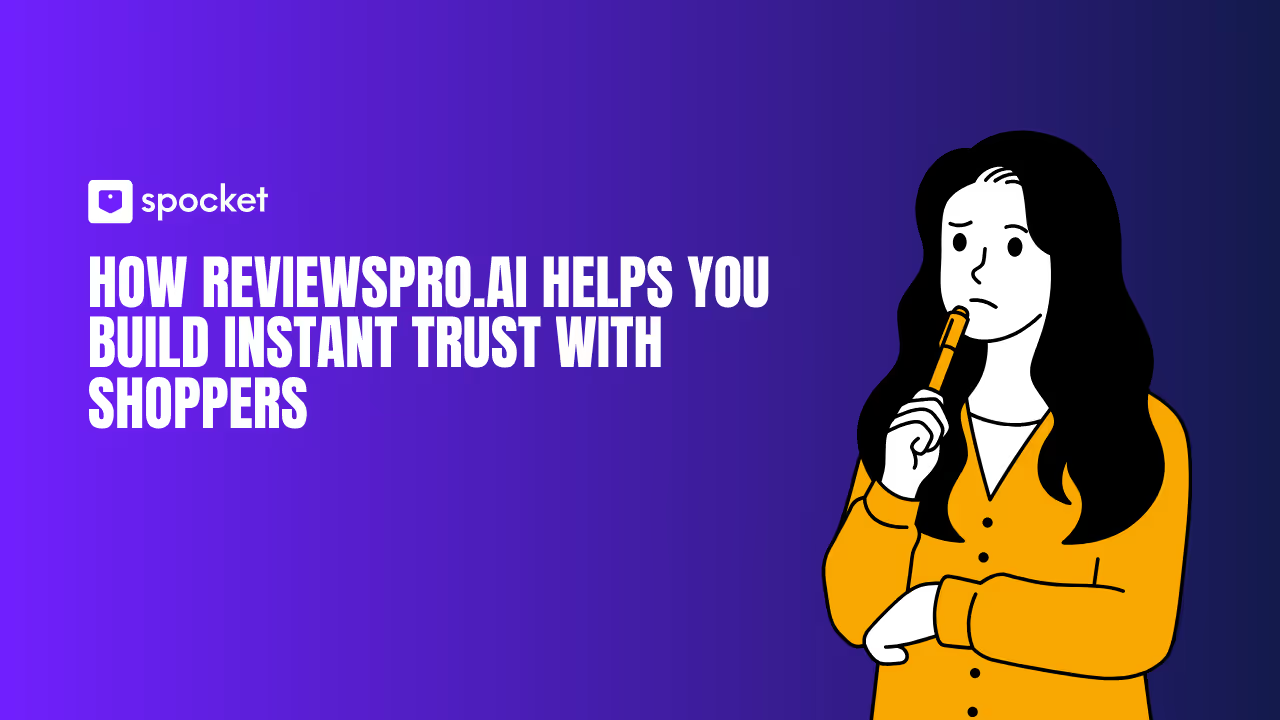Stripe, one of the world’s most popular payment processors, has gained a reputation for providing businesses with an easy way to accept payments online. However, as with any financial service, the question of how safe is Stripe arises. For anyone looking to set up an online business or integrate payment solutions, it’s important to understand how Stripe protects users and their financial transactions.
In this article, we will break down Stripe’s security features, explore potential risks, compare Stripe with other popular payment systems, and provide best practices to ensure your payments are always secure. Whether you are running a dropshipping business with Spocket, managing a SaaS business, or just looking to improve your understanding of payment gateway security, this guide will help you make an informed decision.

What is Stripe?
Before diving into the safety features, let’s take a quick look at what Stripe is and why it has become so popular in the e-commerce and online business space.
Stripe is an online payment processing platform that enables businesses to accept payments over the internet. With its powerful APIs, businesses can integrate Stripe into their websites, apps, and e-commerce platforms such as Shopify, WooCommerce, and Spocket. Stripe is known for its developer-friendly approach, providing tools that allow merchants to easily accept a wide range of payment methods, including credit cards, debit cards, Apple Pay, Google Pay, and even international payment options.
Unlike traditional payment systems that rely on complex infrastructure, Stripe is designed to be simple, fast, and flexible, allowing businesses to set up a fully functional payment gateway within minutes. It is used by millions of businesses, from startups to large enterprises, processing payments for products, services, and subscriptions.
How Safe Is Stripe? A Deep Dive Into Its Security Features
In this section, we will explore the key security features that make Stripe a trusted payment processor for businesses worldwide. From data encryption and PCI DSS compliance to advanced fraud detection tools like Radar, Stripe has implemented a variety of measures to protect both merchants and customers.
Understanding these features is crucial for anyone using or considering Stripe, as they ensure that transactions remain secure and your sensitive information stays protected from cyber threats.
1. Encryption and Tokenization: Protecting Payment Data
One of the core security features of Stripe is its use of encryption and tokenization to protect sensitive payment data. When a customer enters their payment information on a website or app, Stripe encrypts that information using SSL (Secure Socket Layer) technology. This ensures that all data transmitted between the customer and Stripe’s servers is fully protected from third-party interception.
Once the payment information reaches Stripe’s secure servers, it’s tokenized, which means that the actual credit card number is replaced with a unique token. The token itself holds no value for anyone who might try to steal it, making it useless if intercepted. This tokenization process significantly reduces the risk of data breaches and fraud.
By keeping sensitive financial information off your own servers, Stripe mitigates the risk of a security breach on your end. Instead of storing credit card numbers directly, Stripe only retains the necessary token, which is used for further processing without exposing sensitive data.
2. PCI DSS Compliance: Adhering to Global Standards
Stripe is PCI DSS compliant, which means it follows the strict standards set by the Payment Card Industry Data Security Standard (PCI DSS). This is a set of comprehensive requirements designed to ensure that companies that handle cardholder data maintain secure environments.
By being PCI DSS compliant, Stripe ensures that its systems are designed with the highest levels of security. This includes data encryption, access control, and the implementation of other best practices for protecting cardholder data. As a business owner using Stripe, you benefit from this compliance without having to worry about maintaining your own security infrastructure to meet these standards.
3. Two-Factor Authentication (2FA): Adding an Extra Layer of Security
In addition to encryption and tokenization, Stripe offers two-factor authentication (2FA), which adds an extra layer of security to your account. When enabled, 2FA requires you to provide a secondary form of identification (usually a code sent to your phone or email) in addition to your username and password when logging in.
This means that even if someone gains access to your password, they won’t be able to log in to your account without also having access to your second factor (the code). 2FA is a crucial feature for protecting your business, especially if you are handling large sums of money or sensitive information.
4. Stripe Radar: Advanced Fraud Prevention
One of Stripe’s standout features is Radar, its machine learning-powered fraud detection system. Radar analyzes transaction data in real-time, identifying patterns that may indicate fraudulent behavior. It uses a combination of techniques to detect suspicious activities, including:
- Historical transaction data: Radar learns from past transactions to identify trends in user behavior and flag anomalies.
- Risk scoring: Each transaction is assigned a risk score based on various factors like location, device, and payment method.
- Customizable filters: You can set up your own filters to flag specific transactions that meet certain criteria (e.g., high-risk locations, new accounts, etc.).
By leveraging advanced machine learning algorithms, Radar helps identify and block fraudulent transactions before they can be processed, minimizing the risk of chargebacks and financial losses.
What Are the Risks of Using Stripe?
While Stripe offers robust security features, it’s important to understand the potential risks associated with using the platform. From fraud and chargebacks to account freezes and limitations on digital goods, there are several factors that could impact your business.
In this section, we’ll dive into the most common risks of using Stripe, helping you stay informed and take proactive steps to minimize any potential issues that could affect your operations.
1. Fraudulent Transactions
While Stripe’s fraud detection tools are advanced, no system is completely immune to fraud. Chargebacks can still occur, and fraudulent transactions can slip through, especially if the fraudulent party has access to stolen credit card information.
However, Stripe’s Radar system does a great job of minimizing this risk by flagging suspicious transactions in real-time. Businesses should remain vigilant and regularly monitor their account for any unusual activities.
2. Account Freezing for High-Risk Transactions
Another risk associated with Stripe is the potential for account freezing in the event of high-risk transactions. If Stripe detects unusual or potentially fraudulent activity, they may freeze your account temporarily for security reasons, which can disrupt your business operations.
For instance, if you experience an unusually high number of chargebacks, Stripe may take precautionary measures, including freezing your account until the situation is resolved. However, this is a standard practice across most payment processors to protect users and prevent fraud.
3. Limited Protection for Digital Goods
While Stripe offers robust fraud protection, businesses selling digital goods may face some limitations. Digital products, such as software or downloadable content, are often harder to protect from fraud because they are easily distributed. If a customer initiates a chargeback after receiving a digital product, there’s no way to reclaim the product once it’s been downloaded.
Stripe vs. Other Payment Gateways: How Does It Compare?
When deciding on the right payment gateway for your business, comparing Stripe with other popular platforms like PayPal and Square is crucial. Each payment processor has its own strengths, security features, and target audience. Let’s dive deeper into how Stripe compares with PayPal and Square, focusing on their security measures and overall functionality for e-commerce businesses.
1. Stripe vs. PayPal: Which Is Safer?

Both Stripe and PayPal are trusted names in the world of payment processing, but they cater to different needs and offer varying levels of security depending on the type of transactions you're handling.
Stripe: Advanced Security Features for E-Commerce
Stripe is predominantly used by businesses and e-commerce merchants. It is designed to handle a wide range of transactions, from one-time payments to complex subscription models. When it comes to security, Stripe offers advanced fraud prevention tools such as Radar, which uses machine learning to detect and block fraudulent transactions in real time.
Furthermore, Stripe is highly customizable, allowing businesses to tailor their security measures to meet specific needs. It also adheres to PCI DSS compliance, ensuring that sensitive cardholder data is protected throughout the transaction process.
PayPal: Strong Buyer and Seller Protection for Consumers
PayPal, on the other hand, is more consumer-focused and widely used for personal transactions, especially in online marketplaces and consumer-to-consumer (C2C) transactions. PayPal offers strong buyer and seller protection, which is one of its biggest selling points for individuals and businesses that are primarily selling products to customers.
However, PayPal’s protections are less customizable for businesses and don’t offer the same level of flexibility as Stripe in terms of handling complex transactions or integrating deeply with a business’s website or platform.
Which is Safer?
- Stripe is generally safer for e-commerce businesses that require customized solutions and advanced fraud protection tools.
- PayPal is better suited for simpler consumer transactions due to its buyer and seller protection, but it doesn't offer the same level of security customization for businesses.
For e-commerce businesses, Stripe is often the more secure option due to its flexibility, integration with custom websites, and advanced fraud detection tools. PayPal is a simpler option for consumers but may not be the best choice for businesses needing a more robust and tailored payment processing solution.
2. Stripe vs. Square: Which Payment Processor is More Secure?

Both Square and Stripe are popular payment processors, but they cater to different types of businesses. Square is often favored by businesses that operate both online and offline, while Stripe is better suited for online merchants. Let’s compare their security features and overall suitability for different types of businesses.
Square: Great for Physical Stores with Basic Needs
Square is designed primarily for small businesses that need a simple point-of-sale (POS) system for both physical and online transactions. Square provides a secure and easy-to-use system for businesses with physical locations, allowing them to accept payments in-store using a card reader or terminal.
However, while Square’s security features are solid, it is more basic compared to Stripe. For example, Square provides encryption and fraud detection but lacks some of the advanced tools that Stripe offers, such as customizable fraud protection and machine learning-based systems like Radar.
Stripe: Advanced Tools for Online and International Payments
For businesses focused on online transactions, Stripe offers more advanced features, especially when it comes to handling complex payment needs. Stripe’s security features include encryption, tokenization, and two-factor authentication (2FA), all of which are essential for businesses that need to protect sensitive customer data. Stripe is particularly strong in managing recurring payments, subscriptions, and international transactions, providing robust fraud protection for cross-border payments.
Moreover, Stripe offers integrations with a wide variety of third-party apps and customizable APIs, giving businesses more flexibility to adapt Stripe’s security measures to their specific needs.
Which is Safer?
- Square is ideal for businesses that need a simple solution for both online and in-store payments. It is a solid choice for small, physical businesses, but it lacks some of the advanced features found in Stripe.
- Stripe is the better option for online businesses and merchants with complex payment needs. Its security features are more customizable, making it a safer choice for businesses that require greater flexibility and advanced fraud detection systems.
While both Stripe and Square provide solid security, Stripe offers more comprehensive tools, especially for online merchants. Square, with its focus on simplicity and physical stores, is a great solution for businesses with straightforward payment needs, but it may not provide the level of customization that Stripe offers for online businesses.
Best Practices for Securing Your Stripe Account
To ensure your Stripe account remains secure and protected from potential threats, it's essential to follow best practices for account safety and transaction security. Below are some critical steps that can help safeguard your account and minimize the risk of fraud or unauthorized access.
1. Use Strong Passwords and Enable Two-Factor Authentication (2FA)
A strong password is your first line of defense against unauthorized access to your Stripe account. Your password should be unique, difficult to guess, and contain a mix of:
- Uppercase and lowercase letters
- Numbers
- Special characters (e.g., @, #, $, %)
Avoid using easily guessable passwords like your business name, “12345,” or your birthdate. The stronger your password, the harder it is for malicious actors to gain access to your account.
In addition to a strong password, enable two-factor authentication (2FA) for an added layer of security. With 2FA, even if someone obtains your password, they won't be able to access your account without the second factor—typically a code sent to your phone or email. This significantly reduces the chances of unauthorized access.
To enable 2FA on Stripe, go to your account settings and follow the prompts to set up 2FA via your phone or an authentication app like Google Authenticator.
2. Regularly Monitor Your Transactions
Even though Stripe offers advanced fraud prevention tools like Radar, it's important for you, as a business owner, to take an active role in monitoring your transactions. This proactive approach can help you detect any suspicious activity before it escalates.
Regularly check your transaction history on Stripe to spot:
- Unusual payments: Look for transactions that don’t align with your typical sales patterns.
- Refund requests: Pay attention to chargebacks or refund requests, as they could indicate fraud.
- Unfamiliar accounts: If you see transactions from unknown accounts or new customers without proper verification, investigate further.
Stripe's Radar provides detailed risk scores and flags potentially fraudulent transactions. Still, it’s important to regularly review your account for any discrepancies, as Radar isn’t perfect. By staying vigilant, you can catch problems early and take swift action.
3. Be Careful with Third-Party Integrations
Using third-party platforms can enhance the functionality of your business, but they can also introduce security risks if not properly managed. If you’re using platforms like Spocket to automate your dropshipping business, make sure that your payment processing system is securely integrated.
Spocket, for example, works seamlessly with Stripe, providing a reliable payment processing solution for your e-commerce store. However, it’s crucial to:
- Vet third-party platforms: Before integrating with any third-party services, ensure they are trustworthy and have a good track record of handling customer data securely.
- Review app permissions: Only grant necessary permissions to third-party apps. Avoid giving them access to sensitive information if it's not required for the app to function.
- Keep third-party software up to date: Ensure that all integrated apps are regularly updated and patched to prevent any potential vulnerabilities from being exploited.
By maintaining a high level of caution and only using trusted, secure platforms, you can prevent third-party integrations from becoming a point of vulnerability.
4. Limit User Access
If you have a team that manages your Stripe account, it’s important to limit access to those who truly need it. Stripe provides a permissions system that lets you control who can view and manage different aspects of your account.
Here’s how to manage access:
- Create user roles: Assign specific roles based on the person’s job duties. For instance, a financial manager might need access to payment settings, while a customer service representative may only need access to transaction history.
- Revoke unnecessary access: If someone leaves your team or no longer needs access to certain features, promptly revoke their permissions.
- Use separate accounts for different roles: Don’t share your login credentials with multiple people. Instead, create individual accounts for each team member with the appropriate permissions.
By controlling who has access to your account, you can reduce the risk of internal threats or accidental changes that could compromise your account’s security.
Conclusion: Is Stripe Safe to Use?
In conclusion, Stripe is a highly secure payment gateway that offers multiple layers of protection for both businesses and customers. With its PCI DSS compliance, encryption, tokenization, and two-factor authentication, Stripe provides a safe environment for online transactions.
Although no system is entirely risk-free, Stripe’s advanced fraud detection tools and customizable security features make it one of the safest and most reliable options available for online payments. By following best practices, such as enabling 2FA and monitoring transactions regularly, you can ensure that your business remains secure while processing payments through Stripe.







































